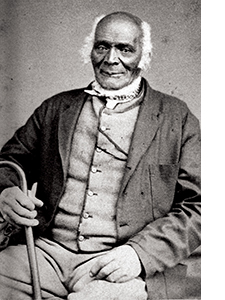Courses
Say Their Names: Reclaiming Lives from the Era of Connecticut Slavery

One of the best kept secrets in local history is that Connecticut was among the largest slave-owning colonies in the late 18th century. More than 1500 enslaved people worked in fields and households throughout the region, including in Middletown. Only recently have local researchers—amateur and professional alike—stepped forward to tell the stories of family members and others from long-ago generations. Five such investigators will share what they have uncovered.
- John Mills relates the story of Prince Mortimer of Middletown.
Thursday, Oct 26, 4:30–6:00
- Pat Wilson Pheanious, board chair of the Connecticut Witness Stone project, is the ninth-generation descendant of enslaved persons from Guilford.
Thursday, Nov. 2, 4:30–6:00
- Desiree Primus is a schoolteacher and descendant of Gad Asher, a Revolutionary War veteran once enslaved in Madison. She is also descended from Ham Primus of Branford and Guilford. His son
Holdridge Primus was a leader of the free Black community in Hartford in the 19th century.
Thursday, Nov. 9, 4:30–6:00
- Kate Rushin is a poet-in-residence and professor at Connecticut College who participated with three other Connecticut poets in an undertaking sponsored by the Witness Stones Project that entailed studying the lives of persons enslaved in Connecticut and giving voice to those lives through poetry.
Thurs., Nov. 16, 7:00–8:30 [Note change in time]
- Tom Schuch’s research played a crucial part in the creation of New London’s Black Heritage Trail. He will tell the story of a New London slave ship captain who was killed in an uprising of African captives on his ship on the coast of Africa in 1763.
Thurs., Nov. 30, 4:30–6:00
Instructor: Richard J. Friswell
Date: Thursdays, Oct. 26, Nov. 2, 9, 30, 4:30–6:00; Nov. 16, 7:00–8:30
Time: Thursdays, Oct. 26, Nov. 2, 9, 30, 4:30–6:00; Nov. 16, 7:00–8:30
Cost: $125